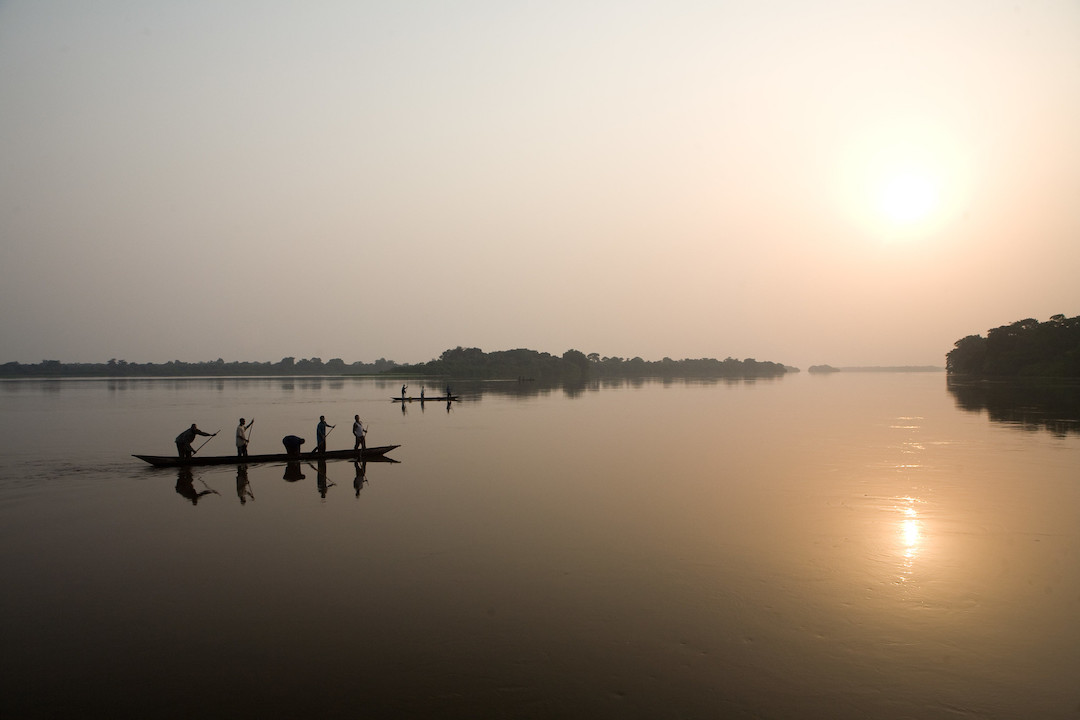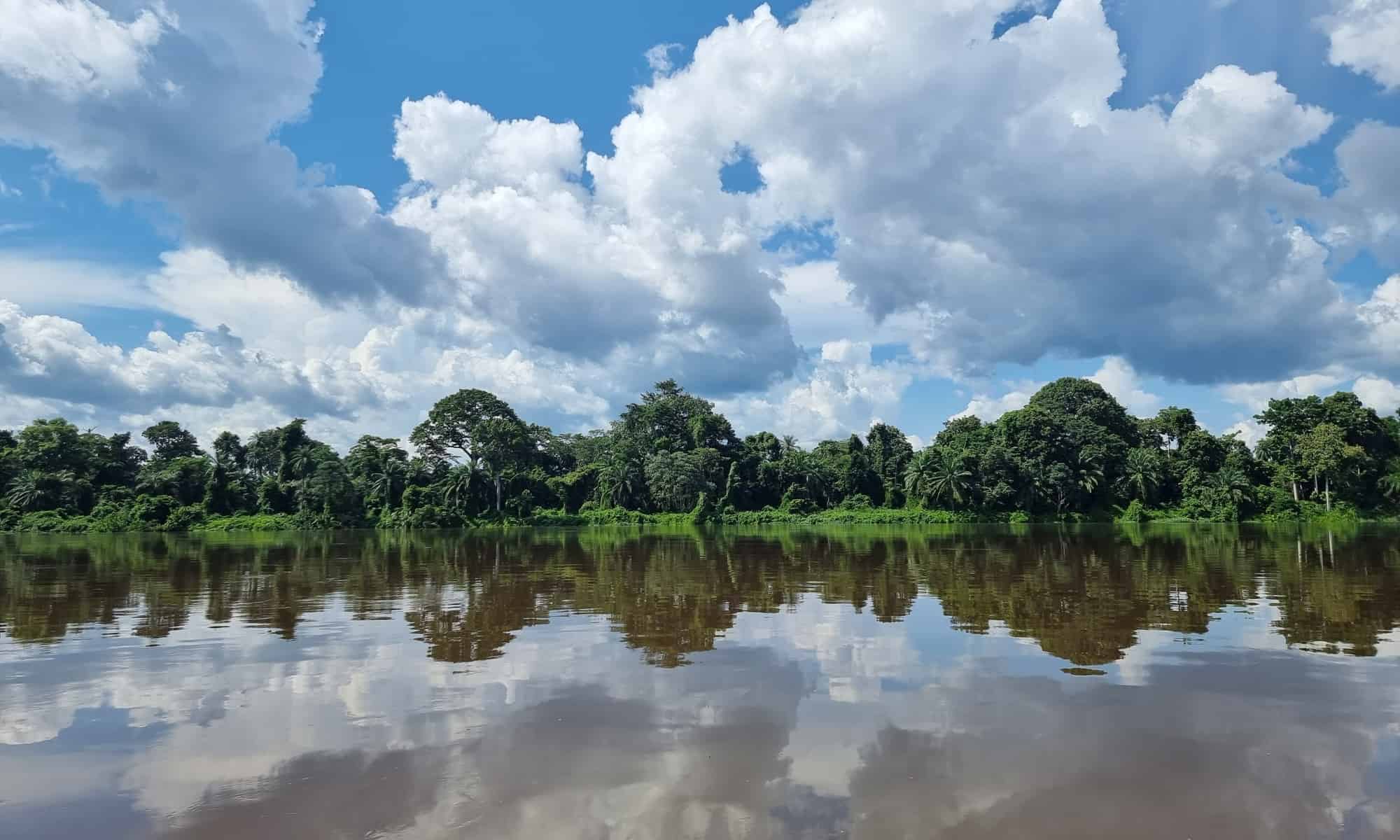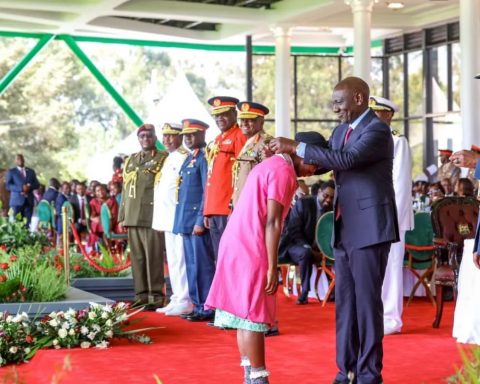The Congo Basin is the largest carbon sink in the world, absorbing more than the Amazon. Universally known as the ‘Lungs of Africa’.
Right at the heart of Africa, lies the most important rainforests in the world. The Congo Basin is the basin of the Congo River, lying astride the equator in West-Central Africa. It’s the world’s second-largest river basin after the Amazon, comprising of an area of more than 1.3 million square miles (3.4 million square kilometers).

The rainforest in the Congo Basin is the largest rainforest in Africa and second only to the Amazon rainforest in size, with 300 million hectares compared to the 800 million hectares in the Amazon. Because of its size and diversity, many experts have characterized the basin’s forest as important for mitigating climate change because of its role as a carbon sink.
Due to the availability of some of the largest tropical rainforests in the world, the Congo Basin stands out as an essential source of water used in agriculture and energy generation.
Spanning six countries, its rainforest provides food security, an essential lifeline for indigenous and local populations, and critical habitat for endangered species.
Facts about The Congo Basin.
- The Congo Basin is one of the most important wilderness areas left on Earth. At 500 million acres, it is larger than the state of Alaska and stands as the world’s second-largest tropical forest.
- A mosaic of rivers, forests, savannas, swamps, and flooded forests, the Congo Basin is teeming with life. Gorillas, elephants, and buffalo all call the region home. The Congo Basin spans across six countries—Cameroon, Central African Republic, Democratic Republic of the Congo, Republic of the Congo, Equatorial Guinea, and Gabon.
- Approximately 10, 000 species of tropical plants in the Congo Basin, and 30 percent are unique to the region. Endangered wildlife, including forest elephants, chimpanzees, bonobos, and lowland and mountain gorillas inhabit the lush forests. 400 other species of mammals, 1,000 species of birds, and 700 species of fish can also be found here.
- The Congo Basin has been inhabited by humans for more than 50,000 years and it provides food, fresh water, and shelter to more than 75 million people. Nearly 150 distinct ethnic groups exist and the region’s Ba’Aka people are among the most well-known representatives of an ancient hunter-gatherer lifestyle. Their lives and well-being are linked intimately with the forest.

The Congo River.
Also known as the Zaire River, it is the second-longest river in Africa, shorter only than the Nile, as well as the third largest river in the world by discharge volume, following the Amazon and the Ganges rivers. It is also the world’s deepest recorded river, with measured depths of around 219.5 m (720 ft). The Congo-Lualaba-Chambeshi River system has an overall length of 4,700 km (2,920 miles), which makes it the world’s ninth-longest river. The Chambeshi is a tributary of the Lualaba River, and Lualaba is the name of the Congo River upstream of Boyoma Falls, extending for 1,800 km (1,120 miles).
The Congo’s discharge at its mouth ranges from 23,000 to 75,000 m3/s (810,000 to 2,650,000 cu ft/s), with an average of 41,000 m3/s (1,400,000 cu ft/s).[1] The river transports annually 86 million tonnes of suspended sediment to the Atlantic Ocean and an additional 6% of bedload.
The sources of the Congo are in the highlands and mountains of the East African Rift, as well as Lake Tanganyika and Lake Mweru, which feed the Lualaba River, which then becomes the Congo below Boyoma Falls. The Chambeshi River in Zambia is generally taken as the source of the Congo in line with the accepted practice worldwide of using the longest tributary, as with the Nile River.
The Congo Rainforest.
While nine countries (Angola, Cameroon, Central African Republic, Democratic Republic of the Congo, Republic of the Congo, Burundi, Rwanda, Tanzania, Zambia) have part of their territory in the Congo Basin, conventionally six countries with extensive forest cover in the region are generally associated with the Congo rainforest: Cameroon, the Central African Republic, the Republic of Congo, the Democratic Republic of Congo (DRC), Equatorial Guinea and Gabon. (Technically most of Gabon and parts of the Republic of Congo are in the Ogooue River Basin, while a large chunk of Cameroon is in the Sanaga River Basin). Of these six countries, DRC contains the largest area of rainforest, with 107 million hectares, amounting to 60 percent of Central Africa’s lowland forest cover.
The Congo rainforest is known for its high levels of biodiversity, including more than 600 tree species and 10,000 animal species. Some of its most famous residents include forest elephants, gorillas, chimpanzees, okapi, leopards, hippos, and lions.
Facts about The Congo Rainforest.
- The rainforest is located in central Africa.
- It spans approximately 1.5 million square miles.
- It’s the world’s second-largest rainforest (only the Amazon is larger).
- Most of the Congo Rainforest is in the Democratic Republic of Congo (DRC); however, there are also significant areas in Cameroon, Gabon, Equatorial Guinea, the Republic of Congo, and the Central African Republic.
- The most famous Congo rainforest people are the Pygmies. The average height of Pygmy men is just 4 feet 10 inches (1.45 meters). The average height of Pygmy women is just 4 feet 1 inch (1.33 meters).
- Commercial logging and expansion of farming have made the Congo rainforest one of the most endangered ecosystems in the world.
- Five of the national parks in the Congo Rainforest are UN World Heritage Sites (meaning they have special significance to the world).
- The Congo River, which is the second largest river in the world, flows through the rainforest.
- The Congo is very rainy. The average rainfall is a little over 58 inches (147 centimeters) per year.
- The climate of the Congo is warm and wet with an average temperature of 77 degrees Fahrenheit.
Read also: Tsavo National Park; Kenya’s Natural Wonder
Congo Rainforest Animals.
The Congo rainforest is teeming with life, it is home to approximately 450 species of mammals, 300 reptile species, 200 amphibian species, and over 1,000 bird species. The following list of facts describes some of these amazing animals.
The Congo rainforest is the only place in the world where all three subspecies of gorillas can be found. They are the mountain gorilla, the lowland gorilla, and the eastern lowland gorilla.
Bonobos are found only in the Congo rainforest, they are the closest relatives to human beings.
The African forest elephant can be found in the Congo rainforest. It is smaller than the savanna elephant and has downward-projecting tusks.
The okapi is an animal that looks like a cross between a giraffe and a horse. In fact, it is often called a forest giraffe. It is brown and has white striped legs. It is found only in the rainforest of the Democratic Republic of Congo (DRC).
Black Colobus monkeys can be found living in the high canopies of the Congo rainforest. They are well known for their fantastic jumping skills. They are one of the most endangered monkeys in Africa.
Congo Rainforest Plants.
The rainforests of the Congo are home to more than 11,000 different species of plants. Over one thousand of these species are unique to the Congo rainforest. Below we list a few of these species and some interesting facts about these rainforest plants.
The Congo rainforest vegetation is so dense that many parts of it have never been seen by humans.
In the most dense parts of the rainforest, only 1% of the sunlight reaches the ground.
Cancer Institutes have identified approximately 1,400 rainforest plants that could potentially be used to fight cancer.
Lianas, which look a lot like vines, are common in the Congo rainforest. They can grow up to three thousand feet long (914 meters).
Teak trees are common in the rainforest of the Congo. They can grow up to 50 meters (154 feet) high. These trees are in high demand as a source of wood and are one of the main reasons for the alarming rate of deforestation in the forest.
The lush rainforests of Central Africa cover about 1,700,000 square kilometers, making up 18 percent of all the world’s rainforests.

The Congo Basin, World’s largest unexplored ecosystem.
The Congo Basin is one of the largest unexplored forest ecosystems on the planet. Of the 400 million hectares that the basin comprises, about 200 million of them are covered by forest, with 90 percent being tropical dense forests.
The forests and wetlands of the Congo Basin are home to an incredibly diverse range of plants and wildlife, many of which have yet to be discovered or studied by scientists. Endangered wildlife, including forest elephants, chimpanzees, bonobos, and lowland and mountain gorillas, inhabit the lush forests.
About 400 other species of mammals, 1,000 species of birds, and 700 species of fish can also be found here, with many of these wild animals found nowhere else on Earth. There are about 10,000 known species of tropical plants in the basin, and about a third of these species are unique to the region.
The Congo Basin, sometimes referred to as the “heart of Africa” and “lungs of the world,” absorbs more carbon than the tropical forests of the Amazon and Southeast Asia combined. It’s home to 75 million people and species found nowhere else on Earth. Yet these forests are disappearing at alarming rates.
The World’s Green Treasure (Congo Basin) under threat.
DR Congo suffers from what has become known as the “resource curse”: a wealth of natural resources, a history of weak and corrupt government, and a range of external interests have combined to create a scramble for resources for the personal gain of a few individuals that have crippled and impoverished the country and its people.
According to satellite data analysis by Global Forest Watch, an initiative of the World Resources Institute, primary rainforest loss in the Congo Basin more than doubled between the first and second half of the period from 2002 to 2019. In 2019 alone, 590,000 hectares were lost (an area more than half the size of Jamaica).
While deforestation rates in the Congo Basin showed a downward trend from 2015-20, the basin still saw 2.2 million hectares of forest loss and 1.5 million hectares of forest degradation in that period. The expansion of agriculture and livestock farming is a major contributor to this deforestation, as is industrial activity such as logging, mining, and palm oil plantations. This loss of forest cover not only threatens the unique biodiversity of the region but also has significant implications for climate change and the livelihoods of local communities who rely on the forests for their survival.







